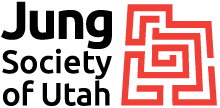Active Imagination
“From the beginning I had conceived my voluntary confrontation with the unconscious as a scientific experiment which I myself was conducting and in whose outcome I was vitally interested. Today I might equally well say that it was an experiment which was being conducted on me.”
– C.G. Jung, Memories, Dreams, Reflections [178]
Who would seriously consider listening to the voices in their head?
Carl Jung, for one. As he neared middle age, this reputable doctor who set such store by his scientifically-trained intellect found himself faced with disruptive demands from his own unconscious. Worried that he might be losing his sanity, he fought to maintain his sense of self in the face of these strange inner forces that grew in strength and urgency.
“I stood helpless before an alien world; everything in it seemed difficult and incomprehensible. I was living in a constant state of tension; often I felt as if gigantic blocks of stone were tumbling down upon me.” [Memories, Dreams, Reflections 176]
He had built up his practice treating neuroses and psychoses as an outside observer, and to his dismay he now found himself experiencing some of the phenomena he had seen in his patients. In reflecting on this, he concluded that in order to be a truly effective and credible help, he had to gain a first-hand knowledge of what his patients went through. He had observed the workings of the unconscious enough by then to know that he was taking a serious risk.
“It was during Advent of the year 1913 December 12, to be exact that I resolved upon the decisive step. I was sitting at my desk once more, thinking over my fears. Then I let myself drop.” [179]

This was the beginning of a pivotal phase in Jung’s life: as he took part in dreams and visions and otherworldly experiences, confronted and struggled to understand them, he not only came to a fuller understanding of himself, he also unlocked the door to his most important work. While he was making these expeditions inward, his outer life served as a vital anchor for him: “This idea that I was committing myself to a dangerous enterprise not for myself alone, but also for the sake of my patients helped me over several critical phases.” [179] “It was most essential for me to have a normal life in the real world as a counterpoise to that strange inner world.” [189] Finally, after he had done this inner work, it was time to re-engage the real world:
“Today I can say that I have never lost touch with my initial experiences. All my works, all my creative activity, has come from those initial fantasies and dreams which began in 1912, almost fifty years ago. Everything that I accomplished in later life was already contained in them, although at first only in the form of emotions and images.” [192]
The most famous result of these experiments was, of course, the Red Book (or Liber Novus) which has gained so much attention since its publication in 2009. Our great benefit of hindsight, and maybe even the beauty of the paintings and calligraphy in the Red Book may make it hard to appreciate how difficult this work really was for Dr. Jung, though reading his accounts of it make it clear.

Psychological Types was the first major work that Jung produced after this period, and it has had an incalculably powerful influence on modern society, particularly through the personality theories which (argue with them if you will) have given so much meaning and direction to people’s lives. Socionics.com, for example, argues that Psychological Types was “perhaps the greatest achievement of his career.”
Besides this, Dr. Jung’s work on Active Imagination has drawn plenty of interest in itself, and it’s easy to see why. But he and those of his followers who use it have given words of caution. Although it can be illuminating and empowering to explore our fantasies, there are dangers, some of them less obvious than others.
For anyone contemplating this work, and especially for anyone who finds the idea exciting and adventurous, it is important to keep in mind that Active Imagination is not daydreaming, and is not something to do simply for entertainment. Jung’s reports of his pioneering efforts speak clearly of the dangers he faced of being trapped by the fantasies, and he also writes of the responsibilities of those who would enter that strange world on any serious mission. “Insight into them must be converted into an ethical obligation.” [Memories, Dreams, Reflections 192]
The Jungian analyst Robert A. Johnson wrote a book called Inner Work to help people work with their dreams and their fantasies through this method of Active Imagination. Written in Johnson’s typically clear and engaging voice, it presents a practical sequence of steps to follow in learning this powerful technique.
~Charles Stanford
Archivist, author, musician
Staff Writer – Jung Society of Utah
Etsy shop: Only Real Quills
Never miss a blog post! Sign up for our newsletter here.
If you enjoyed this blog, please share it via one of the social share buttons here below.
